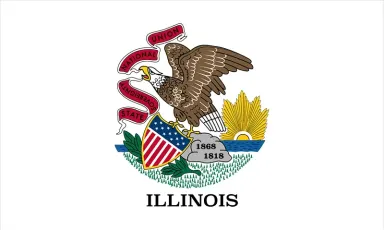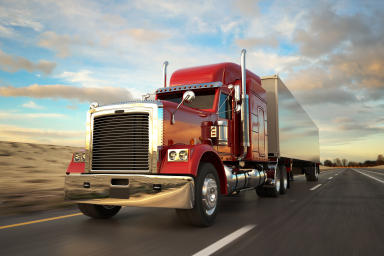Minnesota Trucking Laws

The trucking industry plays an important role in boosting Minnesota's economy. In 2015, it provided 132,910 jobs in the state. Also, the industry paid wages worth more than $6.5 billion in the same year. Semi-trucks, 18-wheelers, and tractor-trailers transport commodities for 67.6% of Minnesota municipalities.
Unfortunately, 2021 was a devastating year for traffic safety in the state. Minnesota Motor Vehicle Crash Facts 2021 reported 4,120 truck accidents. Collisions involving trucks resulted in 1,248 injuries and 72 deaths. The majority of truck crashes occurred on dry roads in clear weather. There were 605 collisions in December. Wednesdays between 9 a.m. and 3 p.m. are the most typical times for commercial truck collisions to occur.
Several factors contribute to the risk of semi-truck accidents in the state. These include driver fatigue, which impairs judgment and reaction time. Another is speeding, which resulted in 171 deaths in 2021 compared to 122 the previous year. Drunk driving caused the deaths of 74 people, while driver distraction caused 27 deaths.
The Minnesota Motor Vehicle Code contains the state's statutory scheme for truck accidents. It establishes truck operation regulations that truck drivers and trucking companies must follow. The code contains major provisions that apply to truck accidents. These include hours of service rules, weight and size limits, and liability insurance requirements. These provisions guide truck accident victims and their legal teams involved in personal injury claims and lawsuits. In some cases, failure to observe these regulations serves as evidence of negligence in a truck accident lawsuit in Minnesota.
Distracted Driving Law in Minnesota
According to the Minnesota Office of Traffic Safety, drivers engage in distracted driving when they perform activities that might distract them from the primary task of driving. A truck driver who uses a cell phone while driving has a high probability of causing fatal traffic accidents.
One catastrophic accident in Minnesota resulted in the death of a motorist when a distracted truck driver, who was later discovered to be browsing real estate on his cell phone while driving, hit the car at a speed of 63 mph. In response, the Minnesota Department of Public Safety released a public service video titled “Eight Seconds: One Fatal Distraction.” The video highlights how one poor decision can result in a fatal traffic accident. According to a poll, 42% of Minnesota residents admitted to texting while driving. Meanwhile, 44% admitted to shaving, eating, or putting on makeup while behind the wheel.
In 2019, Minnesota became the 17th state to ban the use of handheld cell phones while driving. The “Hands-Free” law went into effect on August 1, 2019. It prohibits drivers from reading, sending texts and emails, and accessing the web while the vehicle is in motion or in traffic. This includes sitting at a stoplight or stop sign. Section 169.475 of the Minnesota Statutes governs the use of wireless communications devices while driving on a street or highway. Drivers who injure or kill someone may face a felony charge of criminal vehicular operation or homicide under the Hands-Free Law.
There are many ways plaintiffs and their legal teams can establish negligence. They can prove that the defendant was engaging in distracting activities, like texting, at the time of the accident. The courts presume the defendant is negligent if he or she receives a citation for violating Minnesota’s distracted driving law.
Impaired Driving Law in Minnesota
The law in Minnesota penalizes drunk drivers severely. Commercial truck drivers bear the brunt of the state’s harsh DWI laws. Drivers with commercial driver's licenses (CDL) face several punishments for drunk driving, including fines, jail time, and license suspensions. Meanwhile, Minnesota holds commercial vehicle operators to a different legal standard.
Minnesota law says that drivers with class A, B, or C commercial driver’s licenses are subject to disqualification of their driving privileges if found driving under the influence of alcohol. Section 171.166 of the Minnesota Statutes states that the commissioner shall disqualify a person from operating commercial motor vehicles in accordance with the driver disqualifications and penalties in Title 49 and Part 383 of the Code of Federal Regulations. CDL holders convicted of drunk driving face a one-year disqualification. Similar disqualifications apply to private or commercial vehicle drivers who refuse to take a blood alcohol concentration test.
Despite impaired driving regulations, Minnesota residents continue to drink and drive. In 2020, more than 100,000 Minnesotans admitted drinking and driving at least once every 30 days. Alcohol and drugs affect a driver's ability to observe safe driving practices. Marijuana and prescription medication also contribute to impaired driving.
In 2021, 2,228 people suffered injuries in alcohol-related crashes in Minnesota. 74 people died due to impaired driving in 2021. This figure reflects a slight decrease from 79 deaths in 2020. Furthermore, 72% of DWI offenders in 2021 were male, and half were 20 to 34 years old.
The Not-A-Drop law took effect in 1993 and applies to persons under the age of 21. It makes it illegal for them to drive while having any amount of alcohol in their blood. Drivers under the legal drinking age with a legal alcohol-concentration driving limit of 0.08 or higher will face regular DWI sanctions. The two types of DWI charges in Minnesota are “per se” DWI and impairment DWI. There are various ways to determine whether a driver is driving under the influence of alcohol or drugs. The courts look at slurred speech, erratic driving, and poor performance on a field sobriety test.
Truck accident victims can file an insurance claim under their PIP coverage regardless of who was at fault for the collision. If their PIP coverage runs out, they can file a claim under their liability insurance policy. They may pursue a personal injury lawsuit if the damages exceed the limitations of their available insurance plans. Plaintiffs may also sue insurers for bad faith if they refuse to pay up on damage claims.
Reckless and Careless Driving Laws in Minnesota
Minnesota considers reckless and careless driving a crime. Section 169.13 of the Minnesota Statutes states that reckless driving is an intentional act that might injure a person, kill someone else, or damage property. Meanwhile, careless driving occurs when a driver operates or stops a motor vehicle on a street or highway, endangering people or properties.
Reckless driving is a misdemeanor criminal charge in the state. It becomes a gross misdemeanor criminal charge when it causes serious physical harm or death. A conviction can result in up to a year in prison or $3,000 in fines. Minnesota considers careless driving a misdemeanor criminal charge. It is punishable by up to 90 days in jail or a $1,000 fine.
Injured victims can recover compensatory and punitive damages following a reckless driving accident. The court awards economic and non-economic damages to make injured victims whole again. The court may also grant punitive damages to punish the defendant.
Minnesota Oversize and Overweight Regulations
Overloaded trucks and trailers pose a significant problem on Minnesota's roads and highways. They cause traffic accidents that often result in severe injuries and even fatalities. Overloaded commercial vehicles require more distance to reach a complete stop. Unstable weight distribution also causes transmission failure, tire blowouts, and steering failure.
Sections 169.80 through 169.88 of the Minnesota Statutes control truck size and weight in the state. A driver or truck owner faces misdemeanor charges for driving a vehicle that exceeds the weight limit. Unless otherwise stated or restricted, the legal gross vehicle weight on state roadways is 80,000 pounds. Fines and other civil penalties may apply to overweight or oversized trucks. These trucks are more vulnerable to rollovers and other accidents.
The Commercial Vehicle Weight Compliance Strategic Plan of the URS aims to help improve truck weight compliance in the state. The basis for the plan is the assumption that strict weight compliance enhances safety. It is also expected to protect the state's highway infrastructure.
Minnesota Commercial Trucking Insurance Requirements
The state requires commercial vehicle insurance for any vehicles used for work purposes. Section 221.141 of the Minnesota Statutes requires interstate carriers to obtain the minimum amount of financial responsibility required by law. The insurance must cover injuries and damages to persons or property resulting from the operation of motor vehicles. This insurance applies to injuries or deaths involving motorists, passengers, and pedestrians.
There are various types of commercial trucking insurance requirements in Minnesota. They vary depending on the kind of goods and carriers that transport them. Building movers must have at least $500,000 in motor vehicle liability and $500,000 in general liability coverage. Motor carriers of household products must carry $100,000 or $300,000 in public liability insurance. They must also have $50,000 in property damage and $50,000 in cargo insurance.
Minnesota interstate truckers must also adhere to the Federal Motor Carrier Safety Administration’s insurance requirements. These include public liability insurance that protects them and the public from accidents where the trucker is at fault. The bodily injury portion of liability insurance pays for the hospital bills of pedestrians or other motorists hurt in accidents. Meanwhile, property damage covers the cost of repairing other people's property impacted by the accident.
Various types of truck insurance coverage are also available in Minnesota. These include state- and federal agency-mandated primary liability coverage. This option protects drivers from damage or injuries to other people as a result of a truck accident. The general liability option protects businesses from physical injury and property damage claims. Drivers and operators can also consider comprehensive physical damage and collision coverage. It is for repairing or replacing damage resulting from fire, theft, and collision.
How Much Can Someone Sue for a Truck Accident in Minnesota?
Minnesota does not impose a ceiling on the recoverable amount for pain and suffering damages. This applies to most personal injury situations in the state. The Minnesota Workers’ Compensation Information Brief states that employees injured at work cannot recover pain and suffering benefits in a worker's compensation claim.
There is no cap on either compensatory or punitive damages in the state. Minnesota has repealed the traditional collateral source rule by statute. Collateral sources refer to payments related to the injury or disability in question made to the plaintiff or on the plaintiff's behalf up until the verdict date. This rule allows a reduction in motion in a verdict by the amount of collateral sources paid on behalf of the plaintiff.
Minnesota Statute of Limitations for Truck Accidents
According to Minnesota Statutes Section 541.05, truck accident victims have six years from the date of the injury to file a lawsuit. The same applies to other negligence claims involving bicycles, motorbikes, and automobiles. Injured victims who fail to file damage claims or lawsuits within this timeframe lose their right to compensation.
However, these statutes of limitations are not fixed, as lawmakers may change them at any time Other time limits may also apply based on the nature of a victim's claim. In accidents that involve the government, victims have only 180 days to file claims or lawsuits in court.
There are two ways to follow the statute of limitations. Victims must notify the other party about their personal injury claims. They can also file a lawsuit in a Minnesota state court. Minnesota motor vehicle accident victims bring their cases to a state court. Plaintiffs and their legal teams start a lawsuit by serving a formal complaint to the defendant.
Minnesota Is a No-Fault State for Insurance Claims
Minnesota is a no-fault insurance state. People injured in motor vehicle accidents file claims using their own personal injury protection plans, regardless of who is at fault for the accident. Insurance companies are liable for certain accident costs up to the policy limits of the insured. The remaining damages must be in a civil claim. The filing of claims for no-fault insurance has a time limit of six months after the accident. Minnesota's legal system for insurance claims aims to reduce litigation as much as possible.
The no-fault rule is not without exceptions. In some cases, injured individuals can file a lawsuit against the at-fault motorist in an accident. They must have incurred at least $4,000 in medical expenses. The accident must have resulted in 60 days of disability, permanent impairment, or permanent disfigurement. Meeting these thresholds allows injured victims to sue for damages under Minnesota's modified comparative negligence rule.
Minnesota is a Comparative Fault State for Trucking Accident Lawsuits
Minnesota uses a form of modified comparative fault system known as the "50% Bar Rule." The state accepts negligence claims from injured victims who are not more than 50% at fault for the accident. Under his rule, truck accident victims may recover damages that correspond to their percentage of fault. For example, if a victim sustains $10,000 in losses but the jury finds him to be 30% at fault, he can only receive $7,000 from the opposing party. An injured party who files a claim will not recover anything if a judge or jury determines that he is at least 51% at fault for the crash.
In determining fault, the court considers anything the parties did or failed to do. This process determines whether the parties involved committed negligent or careless actions. A personal injury attorney's main task is to prepare statements that do not incriminate injured plaintiffs. The legal team must convince a judge or jury that the victim is not responsible for the accident.
Average Settlement for Minnesota Trucking Accident Lawsuits
According to a Jury Verdict Research report, the median compensation in personal injury lawsuits in Minnesota is $30,000. In 67% of cases that go to trial, personal injury plaintiffs receive an award.
Minnesota's median personal injury compensation is lower than the national median of $38,179. The state's personal injury lawyers tend to have few small cases. The reason for this is Minnesota's lack of no-fault coverage for motor vehicle crash claims up to $40,000 that are subject to the collateral source rule. The state’s no-fault law can also limit the ability to file a personal injury claim against a third party. The reason for this is the rule that requires drivers to carry personal injury protection as part of their auto insurance.
Legal Resources for Minnesota Trucking Accident Victims
The Office of Traffic Safety
The office is a division of the Minnesota Department of Public Safety. Each year, its researchers produce the Minnesota Motor Vehicle Crash Facts report. The office provides information on drunk driving, motor vehicle accidents, and seatbelt use. It also designs and implements traffic safety and traffic law enforcement programs. It can be reached at 651-201-7065 or dps.mn.gov.
Minnesota Department of Transportation
The department outlines the various Minnesota trucking laws and regulations. The cabinet-level agency oversees all modes of transportation in the state. It is also responsible for maintaining state and interstate highways, municipal airports, and radio navigation aids. It can be contacted at 651-296-3000.
Minnesota Department of Commerce
The department regulates the state insurance industry. It also provides information and assistance to Minnesota citizens through the Consumer Services Center. People who have questions or disputes that need to be resolved with an insurance company can contact the department at 651-539-1600 or via email at consumer.protection@state.mn.us.
Federal Motor Carrier Safety Administration
The agency’s primary task is to reduce crashes, injuries, and fatalities involving buses and large trucks. The federal agency carries out its safety mandate by developing and enforcing data-driven regulations that balance efficiency with motor vehicle safety. More information about the agency and its safety-based initiatives can be accessed at www.fmcsa.dot.gov.
The Minnesota Lawyer Referral and Information Service
This referral service is sponsored by the Hennepin and Ramsey County Bar Associations. Its referral counselors, who are not attorneys, connect people who have legal problems with one of over 200 qualified private attorneys who practice in over 50 areas of law. The referral service can be contacted at 612-752-6699 or mnlris@mnbars.org.
Expertise.com StaffAuthor
Step into the world of Expertise.com, your go-to hub for credible insights. We don't take accuracy lightly around here. Our squad of expert reviewers, each a maestro in their field, has given the green light to every single article you'll find. From rigorous fact-checking to meticulous evaluations of service providers, we've got it all covered. So feel free to dive in and explore. The information you'll uncover has been stamped with the seal of approval by our top-notch experts.




